Monitoring Biodiversity and Ecosystem Services Using L-Band Synthetic Aperture Radar Satellite Data
Abstract
Highlights
- PALSAR-1/-2 annual mosaic images are the most frequently used L-band SAR data for biodiversity and ecosystem services monitoring.
- Most studies (86%) are subnational in scale, while national/global data are also needed to support global biodiversity agreements.
- L-band SAR data has been frequently used with optical data (54% of studies) and/or C-band SAR data (20% of studies), and more recently with satellite lidar data.
- New free L-band SAR datasets (e.g., PALSAR-2 ScanSAR and NISAR data) with high temporal resolution may open new possibilities for biodiversity/ecosystem services monitoring.
Abstract
1. Introduction
2. Materials and Methods
- The approaches used to analyze BES information from L-band SAR satellite data;
- The types of BES information analyzed;
- The types of L-band SAR satellite data used;
- The types of other remote sensing data used in addition to L-band SAR data;
- The geographic scales of analysis and locations of study sites.
3. Results and Discussion
3.1. Number of Papers Published per Year
3.2. Approaches Used to Analyze Biodiversity and Ecosystem Service Information
3.2.1. Image Classification Approaches
3.2.2. Regression Approaches
3.2.3. Other and Combined (Classification and Regression) Approaches
3.3. L-Band SAR Datasets Used
3.4. Other Satellite Data Used in Combination with L-Band SAR Data
3.5. Scales and Locations of Studies
3.6. Limitations of This Study and Potential Future Research Directions
4. Conclusions
Author Contributions
Funding
Data Availability Statement
Acknowledgments
Conflicts of Interest
Appendix A
| Global Environmental Initiative | Target Related to Biodiversity and Ecosystem Services | Remote Sensing-Derived Indicators Used for Tracking Progress Towards the Target (Not a Comprehensive List) |
|---|---|---|
| Kunming-Montreal Global Biodiversity Framework [95] | Target 1: Bring the loss of areas of high biodiversity importance close to zero by 2030, while respecting the rights of indigenous and local people. |
|
| Target 2: Restore 30% of all degraded ecosystems. |
| |
| Target 7: Reduce pollution to levels that are not harmful to biodiversity. |
| |
| Target 8: Minimize the impacts of climate change on biodiversity and build resilience. |
| |
| Target 11: Restore, maintain, and enhance nature’s contributions to people. |
| |
| Target 12: Enhance green spaces and urban planning for human well-being and biodiversity. |
| |
| Target 22: Ensure participation in decision-making and access to justice and information related to biodiversity for all. |
| |
| Paris Agreement [3] | “Each Party shall regularly provide the following information: …, Information necessary to track progress made in implementing and achieving its nationally determined contribution under Article 4”. |
|
| Sustainable Development Goals [2] | Goal 15: “Protect, restore and promote sustainable use of terrestrial ecosystems, sustainably manage forests, combat desertification, and halt and reverse land degradation and halt biodiversity loss”. |
|
| L-Band SAR Dataset | Spatial Resolution(s) | Polarizations | Revisit Period | Years of Data Available | Source |
|---|---|---|---|---|---|
| JERS-1 individual images | 18 m | HH | 44 days | 1992–1998 | https://earth.esa.int/eogateway/missions/jers-1, accessed on 7 October 2025 |
| PALSAR-1 individual images | 10–100 m | HH, HV, VV, and/or VH | 46 days | 2007–2011 | https://www.eorc.jaxa.jp/ALOS/en/alos/sensor/palsar_e.htm, accessed on 7 October 2025 |
| PALSAR-2 individual images | 2–100 m | HH, HV, VV, and/or VH | 14 days | 2014–present | https://www.eoportal.org/satellite-missions/alos-2#spacecraft, accessed on 7 October 2025 |
| JERS-1 annual mosaic images | 25 m | HH | Annual | 1992–1998 | https://www.eorc.jaxa.jp/ALOS/en/dataset/fnf_e.htm, accessed on 7 October 2025 |
| PALSAR-1 annual mosaic images | 25 m | HH, HV | Annual | 2007–2010 | https://www.eorc.jaxa.jp/ALOS/en/dataset/fnf_e.htm, accessed on 7 October 2025 |
| PALSAR-2 annual mosaic images | 25 m | HH, HV | Annual | 2015–2024 | https://www.eorc.jaxa.jp/ALOS/en/dataset/fnf_e.htm, accessed on 7 October 2025 |
| PALSAR-1/-2 “Forest/Non-Forest Map” | 25 m | n/a | Annual | 2007–2010, 2015–2020 | https://www.eorc.jaxa.jp/ALOS/en/dataset/fnf_e.htm, accessed on 7 October 2025 |
| SAOCOM individual images | 10–100 m | HH, HV, VV, VH | 16 days | 2018–present | https://earth.esa.int/eogateway/missions/saocom, accessed on 7 October 2025 |
| NISAR individual images | 3–48 m | HH, HV, VV, VH | 12 days | August 2025–present | https://www.eoportal.org/satellite-missions/nisar#sensor-complement, accessed on 7 October 2025 |
References
- CBD. CBD/COP/15/L.25. 2022. Available online: https://www.cbd.int/doc/c/e6d3/cd1d/daf663719a03902a9b116c34/cop-15-l-25-en.pdf (accessed on 7 October 2025).
- United Nations. A/RES/70/1; United Nations: New York, NY, USA, 2015. [Google Scholar]
- UNFCCC. FCCC/CP/2015/10/Add.1. 2016. Available online: https://www.un.org/en/development/desa/population/migration/generalassembly/docs/globalcompact/FCCC_CP_2015_10_Add.1.pdf (accessed on 7 October 2025).
- UNDP; UNEP-WCMC. Using Spatial Data to Support the Development of Plans for National Monitoring Systems for the Kunming-Montreal Global Biodiversity Framework; United Nations: New York, NY, USA, 2024. [Google Scholar]
- Bourgeau-Chavez, L.L.; Kowalski, K.P.; Carlson Mazur, M.L.; Scarbrough, K.A.; Powell, R.B.; Brooks, C.N.; Huberty, B.; Jenkins, L.K.; Banda, E.C.; Galbraith, D.M.; et al. Mapping Invasive Phragmites Australis in the Coastal Great Lakes with ALOS PALSAR Satellite Imagery for Decision Support. J. Great Lakes Res. 2013, 39, 65–77. [Google Scholar] [CrossRef]
- Arenas-Castro, S.; Regos, A.; Gonçalves, J.F.; Alcaraz-Segura, D.; Honrado, J. Remotely Sensed Variables of Ecosystem Functioning Support Robust Predictions of Abundance Patterns for Rare Species. Remote Sens. 2019, 11, 2086. [Google Scholar] [CrossRef]
- Nagendra, H.; Lucas, R.; Honrado, J.P.; Jongman, R.H.G.; Tarantino, C.; Adamo, M.; Mairota, P. Remote Sensing for Conservation Monitoring: Assessing Protected Areas, Habitat Extent, Habitat Condition, Species Diversity, and Threats. Ecol. Indic. 2013, 33, 45–59. [Google Scholar] [CrossRef]
- Johnson, B.A.; Arino, Y.; Magcale-Macandog, D.B.; Liu, X.; Yamanoshita, M. Potential of Agrivoltaics in ASEAN Considering a Scenario Where Agroforestry Expansion Is Also Pursued. Resour. Conserv. Recycl. 2024, 209, 107808. [Google Scholar] [CrossRef]
- Wulder, M.A.; Masek, J.G.; Cohen, W.B.; Loveland, T.R.; Woodcock, C.E. Opening the Archive: How Free Data Has Enabled the Science and Monitoring Promise of Landsat. Remote Sens. Environ. 2012, 122, 2–10. [Google Scholar] [CrossRef]
- Kuenzer, C.; Ottinger, M.; Wegmann, M.; Guo, H.; Wang, C.; Zhang, J.; Dech, S.; Wikelski, M. Earth Observation Satellite Sensors for Biodiversity Monitoring: Potentials and Bottlenecks. Int. J. Remote Sens. 2014, 35, 6599–6647. [Google Scholar] [CrossRef]
- Simard, M.; Fatoyinbo, L.; Thomas, N.M.; Stovall, A.E.; Parra, A.; Barenblitt, A.; Bunting, P.; Hajnsek, I. A New Global Mangrove Height Map with a 12 Meter Spatial Resolution. Sci. Data 2025, 12, 15. [Google Scholar] [CrossRef]
- Santoro, M.; Cartus, O.; Fransson, J.E.S.; Wegmüller, U. Complementarity of X-, C-, and L-Band SAR Backscatter Observations to Retrieve Forest Stem Volume in Boreal Forest. Remote Sens. 2019, 11, 1563. [Google Scholar] [CrossRef]
- Coops, N.C.; Tompalski, P.; Goodbody, T.R.H.; Queinnec, M.; Luther, J.E.; Bolton, D.K.; White, J.C.; Wulder, M.A.; van Lier, O.R.; Hermosilla, T. Modelling Lidar-Derived Estimates of Forest Attributes over Space and Time: A Review of Approaches and Future Trends. Remote Sens. Environ. 2021, 260, 112477. [Google Scholar] [CrossRef]
- Tian, L.; Wu, X.; Tao, Y.; Li, M.; Qian, C.; Liao, L.; Fu, W. Review of Remote Sensing-Based Methods for Forest Aboveground Biomass Estimation: Progress, Challenges, and Prospects. Forests 2023, 14, 1086. [Google Scholar] [CrossRef]
- Bunting, P.; Rosenqvist, A.; Lucas, R.M.; Rebelo, L.M.; Hilarides, L.; Thomas, N.; Hardy, A.; Itoh, T.; Shimada, M.; Finlayson, C.M. The Global Mangrove Watch—A New 2010 Global Baseline of Mangrove Extent. Remote Sens. 2018, 10, 1669. [Google Scholar] [CrossRef]
- Johnson, B.A.; Umemiya, C.; Magcale-Macandog, D.B.; Estoque, R.C.; Hayashi, M.; Tadono, T. Better Monitoring of Forests According to FAO’s Definitions through Map Integration: Significance and Limitations in the Context of Global Environmental Goals. Int. J. Appl. Earth Obs. Geoinf. 2023, 122, 103452. [Google Scholar] [CrossRef]
- Nesha, M.K.; Hussin, Y.A.; Van Leeuwen, L.M.; Sulistioadi, Y.B. Modeling and Mapping Aboveground Biomass of the Restored Mangroves Using ALOS-2 PALSAR-2 in East Kalimantan, Indonesia. Int. J. Appl. Earth Obs. Geoinf. 2020, 91, 102158. [Google Scholar] [CrossRef]
- Committee on Earth Observation Satellites. A Layman’s Interpretation Guide to L-Band and C-Band Synthetic Aperture Radar Data Version 2.0; Committee on Earth Observation Satellites: Washington, DC, USA, 2023. [Google Scholar]
- JAXA. Global 25 m Resolution PALSAR-2 Forest/Non-Forest Map (FNF) (Ver.2.0.0) Dataset Description; JAXA: Tokyo, Japan, 2022. [Google Scholar]
- Hu, X.; Li, L.; Huang, J.; Zeng, Y.; Zhang, S.; Su, Y.; Hong, Y.; Hong, Z. Radar Vegetation Indices for Monitoring Surface Vegetation: Developments, Challenges, and Trends. Sci. Total Environ. 2024, 945, 173974. [Google Scholar] [CrossRef]
- Huang, H.; Liu, C.; Wang, X.; Zhou, X.; Gong, P. Integration of Multi-Resource Remotely Sensed Data and Allometric Models for Forest Aboveground Biomass Estimation in China. Remote Sens. Environ. 2019, 221, 225–234. [Google Scholar] [CrossRef]
- Fu, B.; Li, H.; Liu, M.; Yao, H.; Gao, E.; Sun, W.; Zhang, S.; Fan, D. Performance Evaluation of Backscattering Coefficients and Polarimetric Decomposition Parameters for Marsh Vegetation Mapping Using Multi-Sensor and Multi-Frequency SAR Images. Ecol. Indic. 2023, 157, 111246. [Google Scholar] [CrossRef]
- Leenaars, C.; Tsaioun, K.; Stafleu, F.; Rooney, K.; Meijboom, F.; Ritskes-Hoitinga, M.; Bleich, A. Reviewing the Animal Literature: How to Describe and Choose between Different Types of Literature Reviews. Lab. Anim. 2021, 55, 129–141. [Google Scholar] [CrossRef]
- Grant, M.J.; Booth, A. A Typology of Reviews: An Analysis of 14 Review Types and Associated Methodologies. Health Inf. Libr. J. 2009, 26, 91–108. [Google Scholar] [CrossRef]
- Page, M.J.; McKenzie, J.E.; Bossuyt, P.M.; Boutron, I.; Hoffmann, T.C.; Mulrow, C.D.; Shamseer, L.; Tetzlaff, J.M.; Akl, E.A.; Brennan, S.E.; et al. The PRISMA 2020 Statement: An Updated Guideline for Reporting Systematic Reviews. BMJ 2021, 372, n71. [Google Scholar] [CrossRef]
- Kadykalo, A.N.; López-Rodriguez, M.D.; Ainscough, J.; Droste, N.; Ryu, H.; Ávila-Flores, G.; Le Clec’h, S.; Muñoz, M.C.; Nilsson, L.; Rana, S.; et al. Disentangling ‘Ecosystem Services’ and ‘Nature’s Contributions to People’. Ecosyst. People 2019, 15, 269–287. [Google Scholar] [CrossRef]
- Guerry, A.D.; Polasky, S.; Lubchenco, J.; Chaplin-Kramer, R.; Daily, G.C.; Griffin, R.; Ruckelshaus, M.; Bateman, I.J.; Duraiappah, A.; Elmqvist, T.; et al. Natural Capital and Ecosystem Services Informing Decisions: From Promise to Practice. Proc. Natl. Acad. Sci. USA 2015, 112, 7348–7355. [Google Scholar] [CrossRef]
- Adeli, S.; Salehi, B.; Mahdianpari, M.; Quackenbush, L.J.; Brisco, B.; Tamiminia, H.; Shaw, S. Wetland Monitoring Using SAR Data: A Meta-Analysis and Comprehensive Review. Remote Sens. 2020, 12, 2190. [Google Scholar] [CrossRef]
- Shimada, M.; Itoh, T.; Motooka, T.; Watanabe, M.; Shiraishi, T.; Thapa, R.; Lucas, R. New Global Forest/Non-Forest Maps from ALOS PALSAR Data (2007–2010). Remote Sens. Environ. 2014, 155, 13–31. [Google Scholar] [CrossRef]
- Nababa, I.; Symeonakis, E.; Koukoulas, S.; Higginbottom, T.; Cavan, G.; Marsden, S. Land Cover Dynamics and Mangrove Degradation in the Niger Delta Region. Remote Sens. 2020, 12, 3619. [Google Scholar] [CrossRef]
- Yu, L.; Cao, Y.; Cheng, Y.; Zhao, Q.; Xu, Y.; Kanniah, K.; Lu, H.; Yang, R.; Gong, P. A Study of the Serious Conflicts between Oil Palm Expansion and Biodiversity Conservation Using High-Resolution Remote Sensing. Remote Sens. Lett. 2023, 14, 654–668. [Google Scholar] [CrossRef]
- Posner, S.; Verutes, G.; Koh, I.; Denu, D.; Ricketts, T. Global Use of Ecosystem Service Models. Ecosyst. Serv. 2016, 17, 131–141. [Google Scholar] [CrossRef]
- Thapa, R.B.; Itoh, T.; Shimada, M.; Watanabe, M.; Takeshi, M.; Shiraishi, T. Evaluation of ALOS PALSAR Sensitivity for Characterizing Natural Forest Cover in Wider Tropical Areas. Remote Sens. Environ. 2014, 155, 32–41. [Google Scholar] [CrossRef]
- Breiman, L. Random Forests. Mach. Learn. 2001, 45, 5–32. [Google Scholar] [CrossRef]
- Belgiu, M.; Drăguţ, L. Random Forest in Remote Sensing: A Review of Applications and Future Directions. ISPRS J. Photogramm. Remote Sens. 2016, 114, 24–31. [Google Scholar] [CrossRef]
- Sheykhmousa, M.; Mahdianpari, M.; Ghanbari, H.; Mohammadimanesh, F.; Ghamisi, P.; Homayouni, S. Support Vector Machine Versus Random Forest for Remote Sensing Image Classification: A Meta-Analysis and Systematic Review. IEEE J. Sel. Top. Appl. Earth Obs. Remote Sens. 2020, 13, 6308–6325. [Google Scholar] [CrossRef]
- Acharki, S.; Frison, P.L.; Amharref, M.; Khoj, H.; Bernoussi, S. Complémentarité des images optiques SENTINEL-2 avec les images radar SENTINEL-1 et ALOS-PALSAR-2 pour la cartographie de la couverture végétale: Application à une aire protégée et ses environs au Nord-Ouest du Maroc via trois algorithmes d’apprentissage automatique. RFPT 2021, 223, 143–158. [Google Scholar] [CrossRef]
- Shiraishi, T.; Motohka, T.; Thapa, R.B.; Watanabe, M.; Shimada, M. Comparative Assessment of Supervised Classifiers for Land Use–Land Cover Classification in a Tropical Region Using Time-Series PALSAR Mosaic Data. IEEE J. Sel. Top. Appl. Earth Obs. Remote Sens. 2014, 7, 1186–1199. [Google Scholar] [CrossRef]
- Selvaraj, J.J.; Gallego Pérez, B.E. Estimating Mangrove Aboveground Biomass in the Colombian Pacific Coast: A Multisensor and Machine Learning Approach. Heliyon 2023, 9, e20745. [Google Scholar] [CrossRef] [PubMed]
- Ma, L.; Liu, Y.; Zhang, X.; Ye, Y.; Yin, G.; Johnson, B.A. Deep Learning in Remote Sensing Applications: A Meta-Analysis and Review. ISPRS J. Photogramm. Remote Sens. 2019, 152, 166–177. [Google Scholar] [CrossRef]
- Zhang, P.; Hu, X.; Ban, Y.; Nascetti, A.; Gong, M. Assessing Sentinel-2, Sentinel-1, and ALOS-2 PALSAR-2 Data for Large-Scale Wildfire-Burned Area Mapping: Insights from the 2017–2019 Canada Wildfires. Remote Sens. 2024, 16, 556. [Google Scholar] [CrossRef]
- Jozdani, S.E.; Johnson, B.A.; Chen, D. Comparing Deep Neural Networks, Ensemble Classifiers, and Support Vector Machine Algorithms for Object-Based Urban Land Use/Land Cover Classification. Remote Sens. 2019, 11, 1713. [Google Scholar] [CrossRef]
- Carlos, J.; Bayas, L.; Lesiv, M.; Waldner, F.; Schucknecht, A.; Duerauer, M.; See, L.; Fritz, S.; Fraisl, D.; Moorthy, I.; et al. A Global Reference Database of Crowdsourced Cropland Data Collected Using the Geo-Wiki Platform. Sci. Data 2017, 4, 170136. [Google Scholar] [CrossRef]
- Stanimirova, R.; Tarrio, K.; Turlej, K.; McAvoy, K.; Stonebrook, S.; Hu, K.-T.; Arévalo, P.; Bullock, E.L.; Zhang, Y.; Woodcock, C.E.; et al. A Global Land Cover Training Dataset from 1984 to 2020. Sci. Data 2023, 10, 879. [Google Scholar] [CrossRef]
- Johnson, B.A.; Iizuka, K.; Bragais, M.A.; Endo, I.; Magcale-Macandog, D.B. Employing Crowdsourced Geographic Data and Multi-Temporal/Multi-Sensor Satellite Imagery to Monitor Land Cover Change: A Case Study in an Urbanizing Region of the Philippines. Comput. Environ. Urban Syst. 2017, 64, 184–193. [Google Scholar] [CrossRef]
- Cerrejón, C.; Valeria, O.; Mansuy, N.; Barbé, M.; Fenton, N.J. Predictive Mapping of Bryophyte Richness Patterns in Boreal Forests Using Species Distribution Models and Remote Sensing Data. Ecol. Indic. 2020, 119, 106826. [Google Scholar] [CrossRef]
- Kobayashi, S.; Fujita, M.S.; Omura, Y.; Haryadi, D.S.; Muhammad, A.; Irham, M.; Shiodera, S. Evaluating Threatened Bird Occurrence in the Tropics by Using L-Band SAR Remote Sensing Data. Remote Sens. 2023, 15, 947. [Google Scholar] [CrossRef]
- Morin, D.; Planells, M.; Guyon, D.; Villard, L.; Mermoz, S.; Bouvet, A.; Thevenon, H.; Dejoux, J.-F.; Le Toan, T.; Dedieu, G. Estimation and Mapping of Forest Structure Parameters from Open Access Satellite Images: Development of a Generic Method with a Study Case on Coniferous Plantation. Remote Sens. 2019, 11, 1275. [Google Scholar] [CrossRef]
- Datta, D.; Dey, M.; Ghosh, P.K.; Pal, A.P. Development of a Spatially Explicit Model of Blue Carbon Storages in Tropical Mudflat Environment through Integrated Radar-Optical Approach and Ground-Based Measurements. Ecol. Inform. 2024, 80, 102509. [Google Scholar] [CrossRef]
- Huang, H.; Liu, C.; Wang, X. Constructing a Finer-Resolution Forest Height in China Using ICESat/GLAS, Landsat and ALOS PALSAR Data and Height Patterns of Natural Forests and Plantations. Remote Sens. 2019, 11, 1740. [Google Scholar] [CrossRef]
- Wessels, K.; Li, X.; Bouvet, A.; Mathieu, R.; Main, R.; Naidoo, L.; Erasmus, B.; Asner, G.P. Quantifying the Sensitivity of L-Band SAR to a Decade of Vegetation Structure Changes in Savannas. Remote Sens. Environ. 2023, 284, 113369. [Google Scholar] [CrossRef]
- Zimbres, B.; Rodríguez-Veiga, P.; Shimbo, J.Z.; Da Conceição Bispo, P.; Balzter, H.; Bustamante, M.; Roitman, I.; Haidar, R.; Miranda, S.; Gomes, L.; et al. Mapping the Stock and Spatial Distribution of Aboveground Woody Biomass in the Native Vegetation of the Brazilian Cerrado Biome. For. Ecol. Manag. 2021, 499, 119615. [Google Scholar] [CrossRef]
- Wingate, V.R.; Phinn, S.R.; Kuhn, N.; Scarth, P. Estimating Aboveground Woody Biomass Change in Kalahari Woodland: Combining Field, Radar, and Optical Data Sets. Int. J. Remote Sens. 2018, 39, 577–606. [Google Scholar] [CrossRef]
- Singh, M.; Friess, D.A.; Vilela, B.; Alban, J.D.T.D.; Monzon, A.K.V.; Veridiano, R.K.A.; Tumaneng, R.D. Spatial Relationships between Above-Ground Biomass and Bird Species Biodiversity in Palawan, Philippines. PLoS ONE 2017, 12, e0186742. [Google Scholar] [CrossRef]
- Fagua, J.C.; Jantz, P.; Rodriguez-Buritica, S.; Duncanson, L.; Goetz, S.J. Integrating LiDAR, Multispectral and SAR Data to Estimate and Map Canopy Height in Tropical Forests. Remote Sens. 2019, 11, 2697. [Google Scholar] [CrossRef]
- Lehmler, S.; Förster, M.; Frick, A. Modelling Green Volume Using Sentinel-1, -2, PALSAR-2 Satellite Data and Machine Learning for Urban and Semi-Urban Areas in Germany. Environ. Manag. 2023, 72, 657–670. [Google Scholar] [CrossRef]
- Endres, A.; Mountrakis, G.; Jin, H.; Zhuang, W.; Manakos, I.; Wiley, J.J.; Beier, C.M. Relative Importance Analysis of Landsat, Waveform LIDAR and PALSAR Inputs for Deciduous Biomass Estimation. Eur. J. Remote Sens. 2016, 49, 795–807. [Google Scholar] [CrossRef]
- Attema, E.P.W.; Ulaby, F.T. Vegetation Modeled as a Water Cloud. Radio Sci. 1978, 13, 357–364. [Google Scholar] [CrossRef]
- Bouvet, A.; Mermoz, S.; Le Toan, T.; Villard, L.; Mathieu, R.; Naidoo, L.; Asner, G.P. An Above-Ground Biomass Map of African Savannahs and Woodlands at 25 m Resolution Derived from ALOS PALSAR. Remote Sens. Environ. 2018, 206, 156–173. [Google Scholar] [CrossRef]
- Kumar, K.; Hari Prasad, K.S.; Arora, M.K. Estimation of Water Cloud Model Vegetation Parameters Using a Genetic Algorithm. Hydrol. Sci. J. 2012, 57, 776–789. [Google Scholar] [CrossRef]
- Mulatu, K.A.; Decuyper, M.; Brede, B.; Kooistra, L.; Reiche, J.; Mora, B.; Herold, M. Linking Terrestrial LiDAR Scanner and Conventional Forest Structure Measurements with Multi-Modal Satellite Data. Forests 2019, 10, 291. [Google Scholar] [CrossRef]
- Valdez, J.W.; Callaghan, C.T.; Junker, J.; Purvis, A.; Hill, S.L.L.; Pereira, H.M. The Undetectability of Global Biodiversity Trends Using Local Species Richness. Ecography 2023, 2023, e06604. [Google Scholar] [CrossRef]
- Geremew, T.; Zewdie, W.; Pellikka, P. Ecosystem Extent Mapping by Integrating Landsat 8, PALSAR-2, and GEDI Lidar. Appl. Geomat. 2023, 15, 61–76. [Google Scholar] [CrossRef]
- Morel, A.C.; Saatchi, S.S.; Malhi, Y.; Berry, N.J.; Banin, L.; Burslem, D.; Nilus, R.; Ong, R.C. Estimating Aboveground Biomass in Forest and Oil Palm Plantation in Sabah, Malaysian Borneo Using ALOS PALSAR Data. For. Ecol. Manag. 2011, 262, 1786–1798. [Google Scholar] [CrossRef]
- Xie, C.; Shao, Y.; Xu, J.; Wan, Z.; Fang, L. Analysis of ALOS PALSAR InSAR Data for Mapping Water Level Changes in Yellow River Delta Wetlands. Int. J. Remote Sens. 2013, 34, 2047–2056. [Google Scholar] [CrossRef]
- Chen, F.; Lin, H.; Zhou, W.; Hong, T.; Wang, G. Surface Deformation Detected by ALOS PALSAR Small Baseline SAR Interferometry over Permafrost Environment of Beiluhe Section, Tibet Plateau, China. Remote Sens. Environ. 2013, 138, 10–18. [Google Scholar] [CrossRef]
- Hoekman, D.H. Satellite Radar Observation of Tropical Peat Swamp Forest as a Tool for Hydrological Modelling and Environmental Protection. Aquat. Conserv. 2007, 17, 265–275. [Google Scholar] [CrossRef]
- JAXA. Global 25 m Resolution PALSAR-2/PALSAR Mosaic (Ver.2.5.0) Dataset Description; JAXA: Tokyo, Japan, 2024. [Google Scholar]
- Hidayat, H.; Teuling, A.J.; Vermeulen, B.; Taufik, M.; Kastner, K.; Geertsema, T.J.; Bol, D.C.C.; Hoekman, D.H.; Haryani, G.S.; Van Lanen, H.A.J.; et al. Hydrology of Inland Tropical Lowlands: The Kapuas and Mahakam Wetlands. Hydrol. Earth Syst. Sci. 2017, 21, 2579–2594. [Google Scholar] [CrossRef]
- Xu, W.; Qin, Y.; Xiao, X.; Di, G.; Doughty, R.B.; Zhou, Y.; Zou, Z.; Kong, L.; Niu, Q.; Kou, W. Quantifying Spatial-Temporal Changes of Tea Plantations in Complex Landscapes through Integrative Analyses of Optical and Microwave Imagery. Int. J. Appl. Earth Obs. Geoinf. 2018, 73, 697–711. [Google Scholar] [CrossRef]
- Zhen, J.; Mao, D.; Shen, Z.; Zhao, D.; Xu, Y.; Wang, J.; Jia, M.; Wang, Z.; Ren, C. Performance of XGBoost Ensemble Learning Algorithm for Mangrove Species Classification with Multisource Spaceborne Remote Sensing Data. J. Remote Sens. 2024, 4, 0146. [Google Scholar] [CrossRef]
- Johnson, B.A.; Xie, Z. Classifying a High Resolution Image of an Urban Area Using Super-Object Information. ISPRS J. Photogramm. Remote Sens. 2013, 83, 40–49. [Google Scholar] [CrossRef]
- Ma, L.; Li, M.; Ma, X.; Cheng, L.; Du, P.; Liu, Y. A Review of Supervised Object-Based Land-Cover Image Classification. ISPRS J. Photogramm. Remote Sens. 2017, 130, 277–293. [Google Scholar] [CrossRef]
- FAO. Guidelines for Country Reporting to FRA 2010; FAO: Rome, Italy, 2010. [Google Scholar]
- Altunel, A.O.; Akturk, E.; Altunel, T. Examining the PALSAR-2 Global Forest/Non-Forest Maps through Turkish Afforestation Practices. Int. J. Remote Sens. 2020, 41, 6071–6088. [Google Scholar] [CrossRef]
- Parada Alzate, L.M.; Andramunio Acero, C.P.; López Muñoz, M.T.; Rondón Martínez, Y.F.; Moreno Pérez, L.A. Zonificación de Altos Valores de Conservación (AVC) del Complejo Cenagoso de Zapatosa (Colombia) a partir de una evaluación multicriterio. Investig. Geogr. 2024, 115, e60945. [Google Scholar] [CrossRef]
- Lucas, R.; Van De Kerchove, R.; Otero, V.; Lagomasino, D.; Fatoyinbo, L.; Omar, H.; Satyanarayana, B.; Dahdouh-Guebas, F. Structural Characterisation of Mangrove Forests Achieved through Combining Multiple Sources of Remote Sensing Data. Remote Sens. Environ. 2020, 237, 111543. [Google Scholar] [CrossRef]
- Zeng, P.; Zhang, W.; Li, Y.; Shi, J.; Wang, Z. Forest Total and Component Above-Ground Biomass (AGB) Estimation through C- and L-Band Polarimetric SAR Data. Forests 2022, 13, 442. [Google Scholar] [CrossRef]
- European Space Agency. CCI Biomass Algorithm Theoretical Basis Document Version 4; ESA: Didcot, UK, 2023. [Google Scholar]
- Gupta, R.; Sharma, L.K. Mixed Tropical Forests Canopy Height Mapping from Spaceborne LiDAR GEDI and Multisensor Imagery Using Machine Learning Models. Remote Sens. Appl. Soc. Environ. 2022, 27, 100817. [Google Scholar] [CrossRef]
- Martins, F.C.; Godinho, S.; Guiomar, N.; Medinas, D.; Rebelo, H.; Segurado, P.; Marques, J.T. Vegetation Canopy Height Shapes Bats’ Occupancy: A Remote Sensing Approach. GISci. Remote Sens. 2024, 61, 2374150. [Google Scholar] [CrossRef]
- Morin, D.; Planells, M.; Baghdadi, N.; Bouvet, A.; Fayad, I.; Le Toan, T.; Mermoz, S.; Villard, L. Improving Heterogeneous Forest Height Maps by Integrating GEDI-Based Forest Height Information in a Multi-Sensor Mapping Process. Remote Sens. 2022, 14, 2079. [Google Scholar] [CrossRef]
- Scarth, P.; Armston, J.; Lucas, R.; Bunting, P. A Structural Classification of Australian Vegetation Using ICESat/GLAS, ALOS PALSAR, and Landsat Sensor Data. Remote Sens. 2019, 11, 147. [Google Scholar] [CrossRef]
- Pandey, P.C. Relationship of Bioclimatic and Topographic Variation on Species-Biomass Distribution in Tropical Forest Reserve. Trop. Ecol. 2024, 65, 677–691. [Google Scholar] [CrossRef]
- Qin, Y.; Xiao, X.; Dong, J.; Zhang, G.; Roy, P.S.; Joshi, P.K.; Gilani, H.; Murthy, M.S.R.; Jin, C.; Wang, J.; et al. Mapping Forests in Monsoon Asia with ALOS PALSAR 50-m Mosaic Images and MODIS Imagery in 2010. Sci. Rep. 2016, 6, 20880. [Google Scholar] [CrossRef]
- Dong, J.; Xiao, X.; Sheldon, S.; Biradar, C.; Zhang, G.; Dinh Duong, N.; Hazarika, M.; Wikantika, K.; Takeuhci, W.; Moore, B. A 50-m Forest Cover Map in Southeast Asia from ALOS/PALSAR and Its Application on Forest Fragmentation Assessment. PLoS ONE 2014, 9, e85801. [Google Scholar] [CrossRef]
- Gaveau, D.L.A.; Sloan, S.; Molidena, E.; Yaen, H.; Sheil, D.; Abram, N.K.; Ancrenaz, M.; Nasi, R.; Quinones, M.; Wielaard, N.; et al. Four Decades of Forest Persistence, Clearance and Logging on Borneo. PLoS ONE 2014, 9, e101654. [Google Scholar] [CrossRef]
- Xu, Y.; Yu, L.; Li, W.; Ciais, P.; Cheng, Y.; Gong, P. Annual Oil Palm Plantation Maps in Malaysia and Indonesia from 2001 to 2016. Earth Syst. Sci. Data 2020, 12, 847–867. [Google Scholar] [CrossRef]
- Qin, Y.; Xiao, X.; Dong, J.; Zhou, Y.; Wang, J.; Doughty, R.B.; Chen, Y.; Zou, Z.; Moore, B. Annual Dynamics of Forest Areas in South America during 2007–2010 at 50-m Spatial Resolution. Remote Sens. Environ. 2017, 201, 73–87. [Google Scholar] [CrossRef]
- Oakes, G.; Hardy, A.; Bunting, P.; Rosenqvist, A. RadWet-L: A Novel Approach for Mapping of Inundation Dynamics of Forested Wetlands Using ALOS-2 PALSAR-2 L-Band Radar Imagery. Remote Sens. 2024, 16, 2078. [Google Scholar] [CrossRef]
- Bunting, P.; Rosenqvist, A.; Hilarides, L.; Lucas, R.M.; Thomas, N.; Tadono, T.; Worthington, T.A.; Spalding, M.; Murray, N.J.; Rebelo, L.-M. Global Mangrove Extent Change 1996–2020: Global Mangrove Watch Version 3.0. Remote Sens. 2022, 14, 3657. [Google Scholar] [CrossRef]
- Santoro, M.; Cartus, O.; Quegan, S.; Kay, H.; Lucas, R.M.; Araza, A.; Herold, M.; Labrière, N.; Chave, J.; Rosenqvist, Å.; et al. Design and Performance of the Climate Change Initiative Biomass Global Retrieval Algorithm. Sci. Remote Sens. 2024, 10, 100169. [Google Scholar] [CrossRef]
- Johnson, B.A.; Mader, A.D.; Dasgupta, R.; Kumar, P. Citizen Science and Invasive Alien Species: An Analysis of Citizen Science Initiatives Using Information and Communications Technology (ICT) to Collect Invasive Alien Species Observations. Glob. Ecol. Conserv. 2020, 21, 00812. [Google Scholar] [CrossRef]
- Sargeant, J.M.; O’Connor, A.M. Scoping Reviews, Systematic Reviews, and Meta-Analysis: Applications in Veterinary Medicine. Front. Vet. Sci. 2020, 7, 11. [Google Scholar] [CrossRef]
- CBD CBD/COP/16/WG.I/CRP.11. 2024. Available online: https://www.cbd.int/doc/c/53a2/9483/b5a9d4084465052fcca69d94/cop-16-wg1-crp-11-en.pdf (accessed on 7 October 2025).
- Intergovernmental Panel on Climate Change. Agriculture, Forestry, and Other Land Use. In 2006 IPCC Guidelines for National Greenhouse Gas Inventories; Institute for Global Environmental Strategies: Hayama, Japan, 2006; Volume 4, ISBN 4-88788-032-4. [Google Scholar]

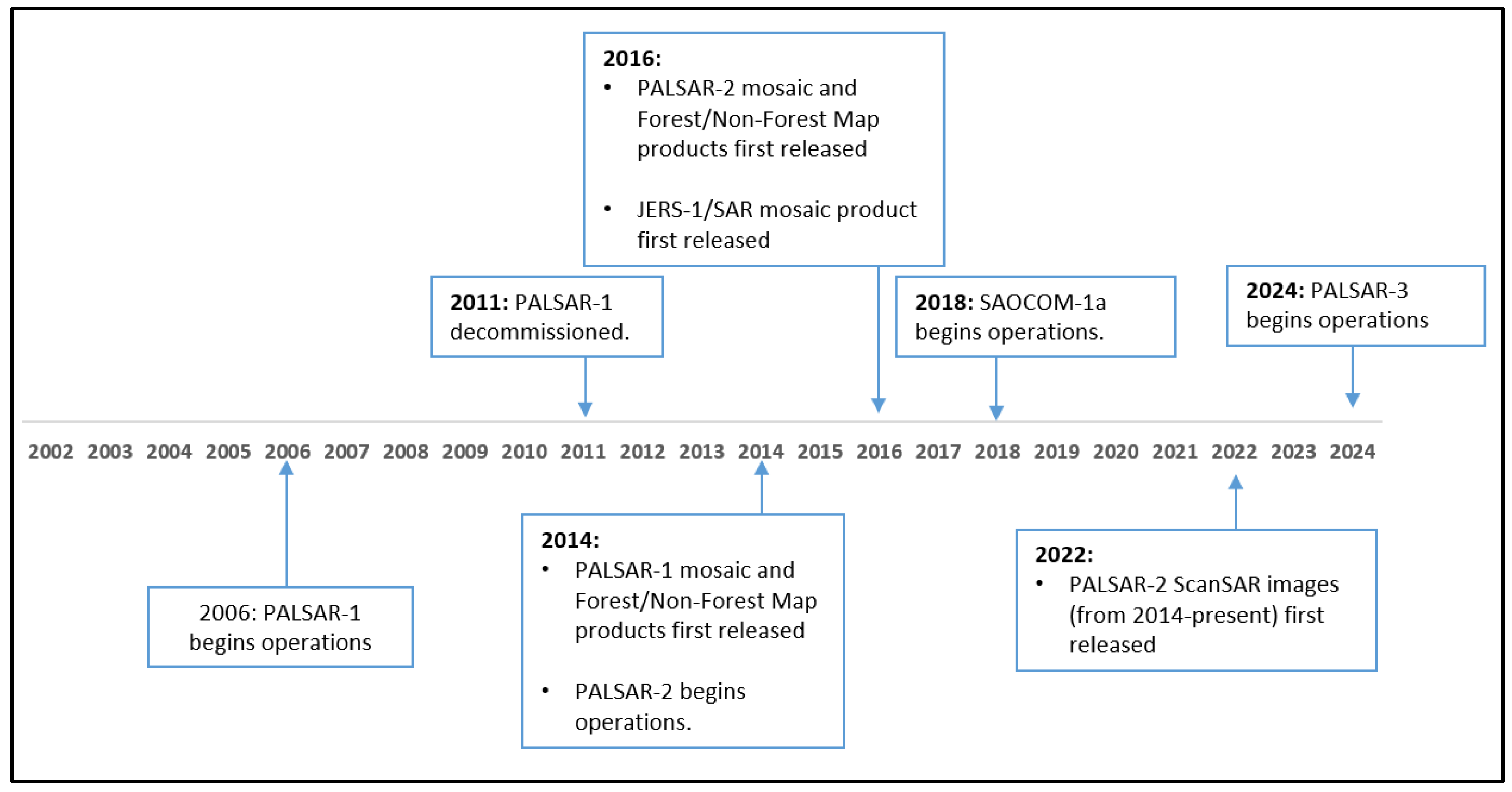


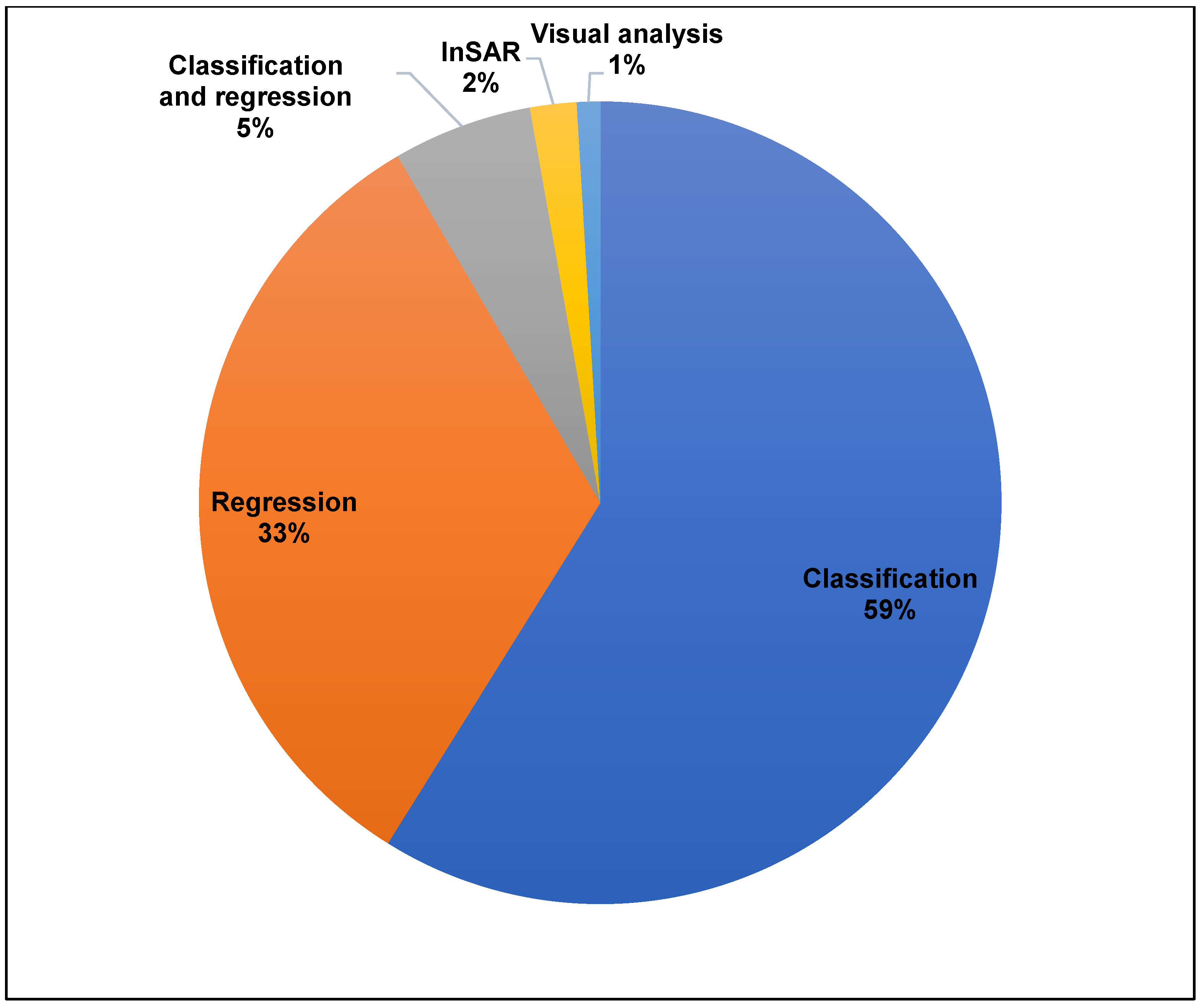

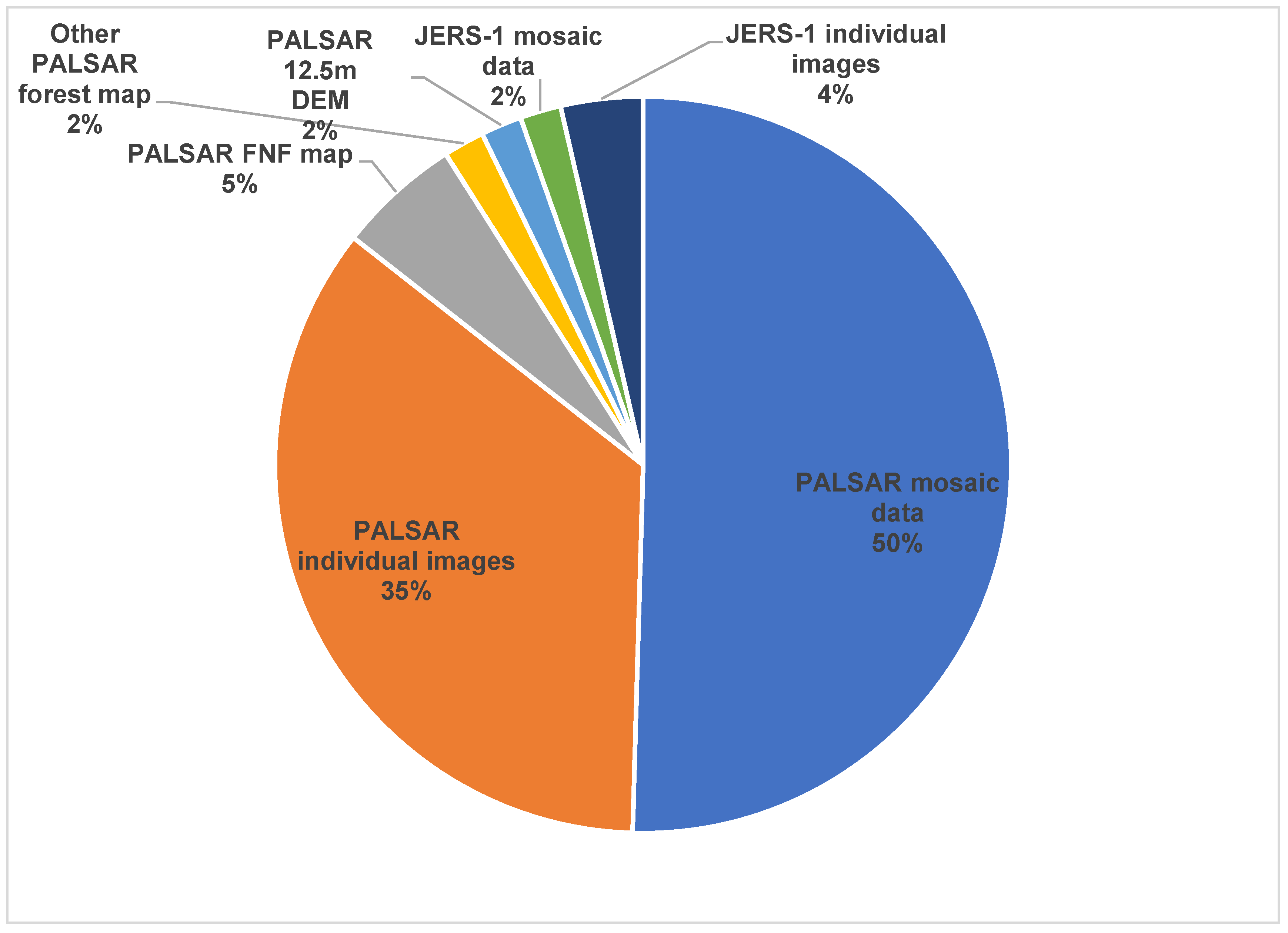
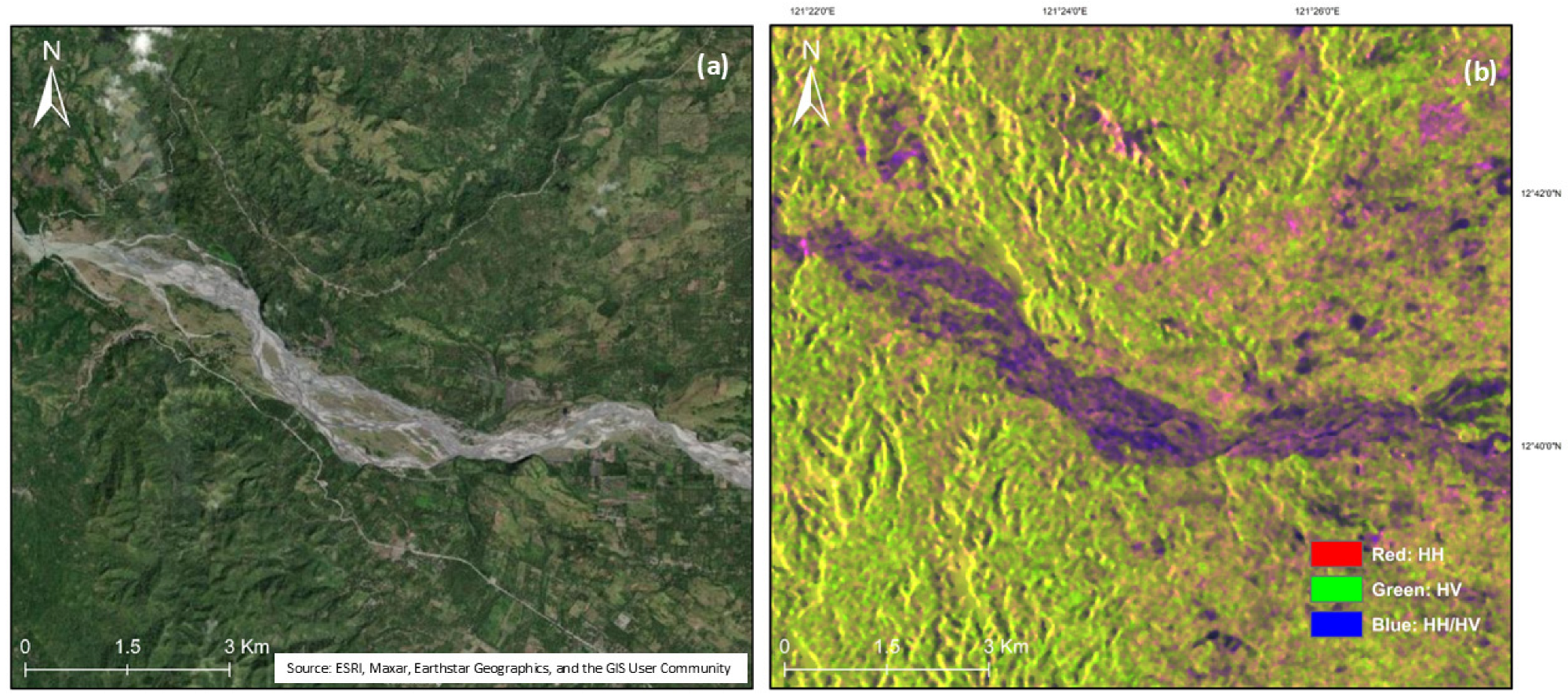
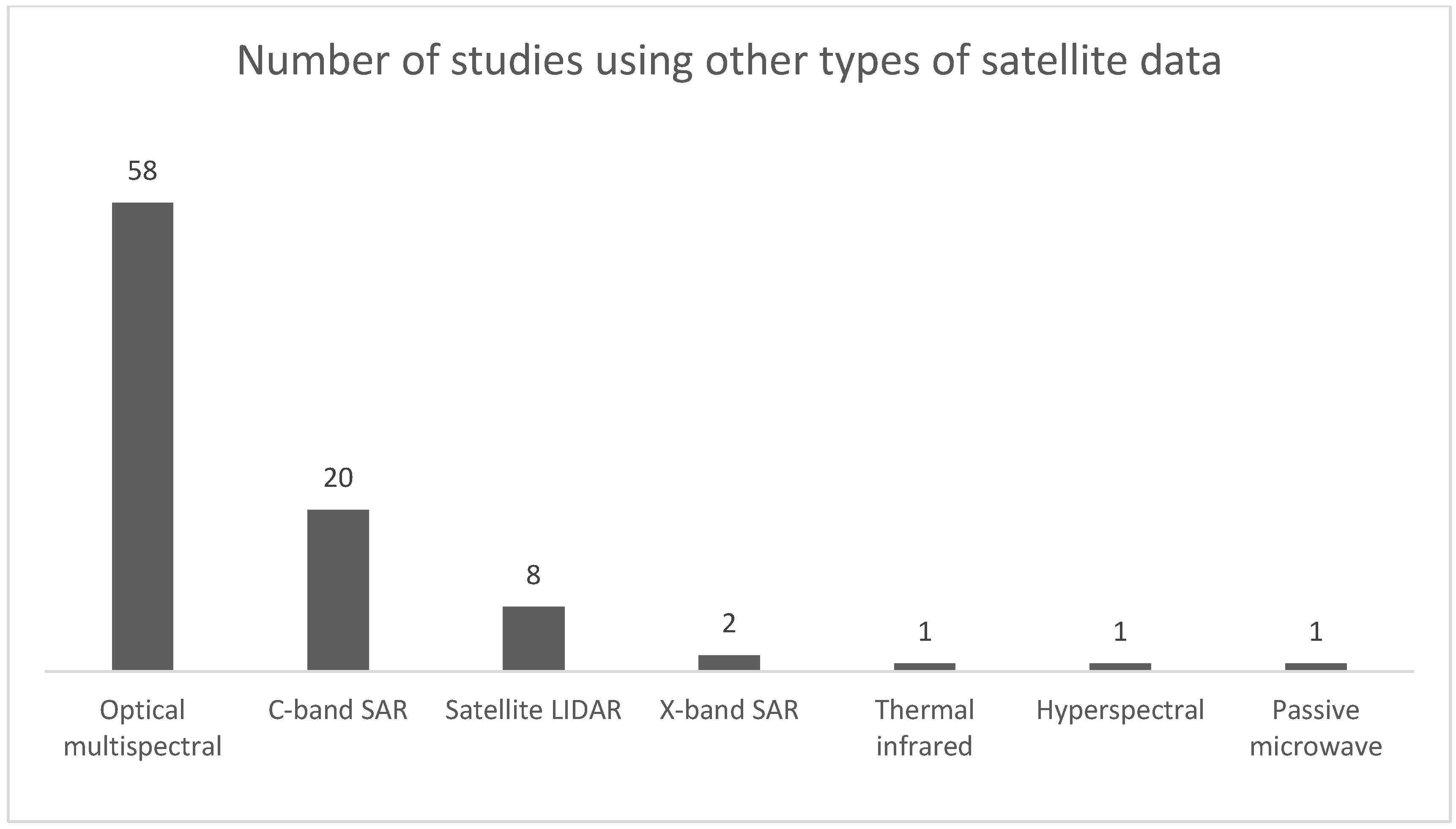

| Countries, Ordered by the Number of National/Subnational Studies | Global Rank, Total Species Richness | Number of National/Subnational Studies |
|---|---|---|
| 3 | 19 |
| 1 | 12 |
| 2 | 11 |
| 8 | 9 |
| 4 | 6 |
| 10 | 4 |
| 6 | 3 |
| 36 | 3 |
| 59 | 3 |
| 7 | 3 |
Disclaimer/Publisher’s Note: The statements, opinions and data contained in all publications are solely those of the individual author(s) and contributor(s) and not of MDPI and/or the editor(s). MDPI and/or the editor(s) disclaim responsibility for any injury to people or property resulting from any ideas, methods, instructions or products referred to in the content. |
© 2025 by the authors. Licensee MDPI, Basel, Switzerland. This article is an open access article distributed under the terms and conditions of the Creative Commons Attribution (CC BY) license (https://creativecommons.org/licenses/by/4.0/).
Share and Cite
Johnson, B.A.; Umemiya, C.; Miwa, K.; Tadono, T.; Hamamoto, K.; Takahashi, Y.; Harada, M.; Ochiai, O. Monitoring Biodiversity and Ecosystem Services Using L-Band Synthetic Aperture Radar Satellite Data. Remote Sens. 2025, 17, 3489. https://doi.org/10.3390/rs17203489
Johnson BA, Umemiya C, Miwa K, Tadono T, Hamamoto K, Takahashi Y, Harada M, Ochiai O. Monitoring Biodiversity and Ecosystem Services Using L-Band Synthetic Aperture Radar Satellite Data. Remote Sensing. 2025; 17(20):3489. https://doi.org/10.3390/rs17203489
Chicago/Turabian StyleJohnson, Brian Alan, Chisa Umemiya, Koji Miwa, Takeo Tadono, Ko Hamamoto, Yasuo Takahashi, Mariko Harada, and Osamu Ochiai. 2025. "Monitoring Biodiversity and Ecosystem Services Using L-Band Synthetic Aperture Radar Satellite Data" Remote Sensing 17, no. 20: 3489. https://doi.org/10.3390/rs17203489
APA StyleJohnson, B. A., Umemiya, C., Miwa, K., Tadono, T., Hamamoto, K., Takahashi, Y., Harada, M., & Ochiai, O. (2025). Monitoring Biodiversity and Ecosystem Services Using L-Band Synthetic Aperture Radar Satellite Data. Remote Sensing, 17(20), 3489. https://doi.org/10.3390/rs17203489







